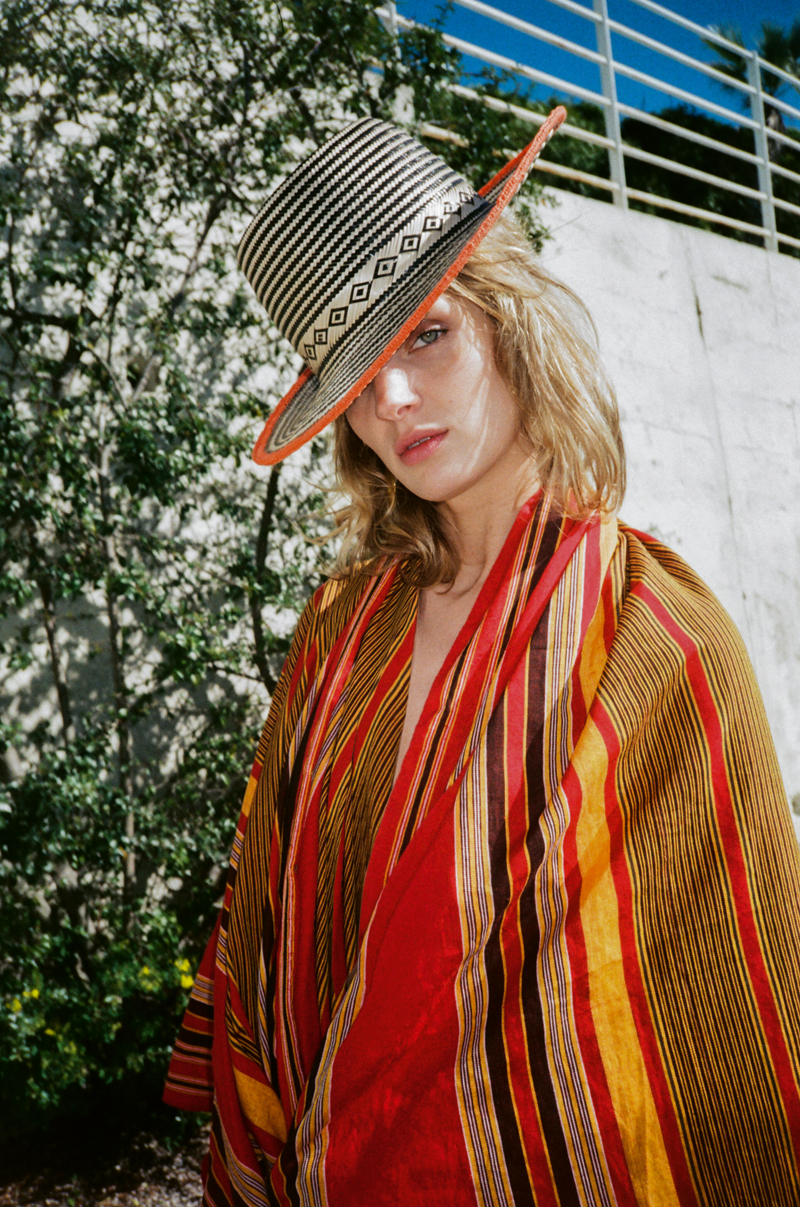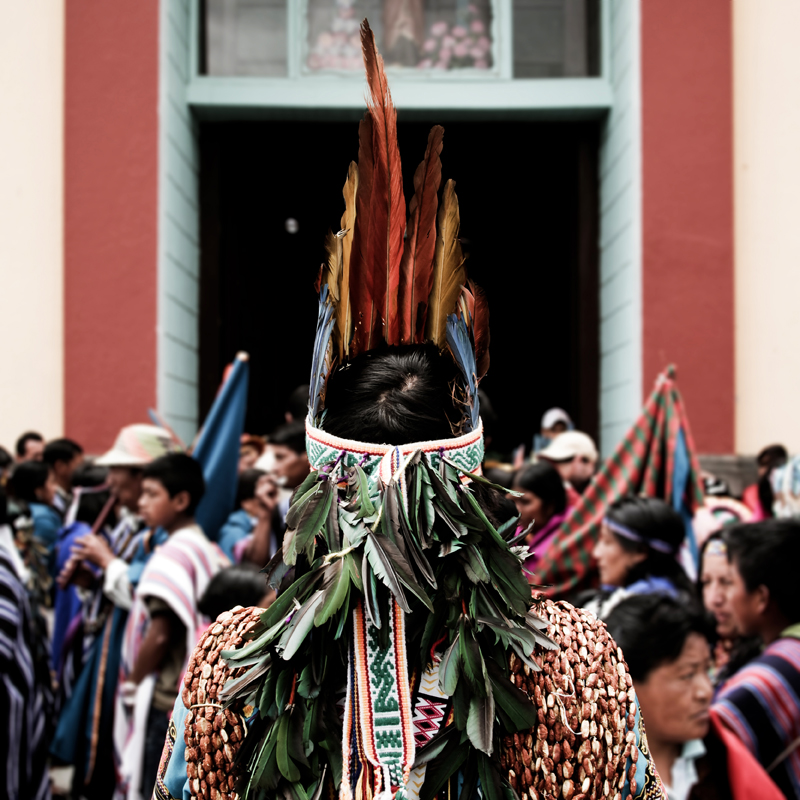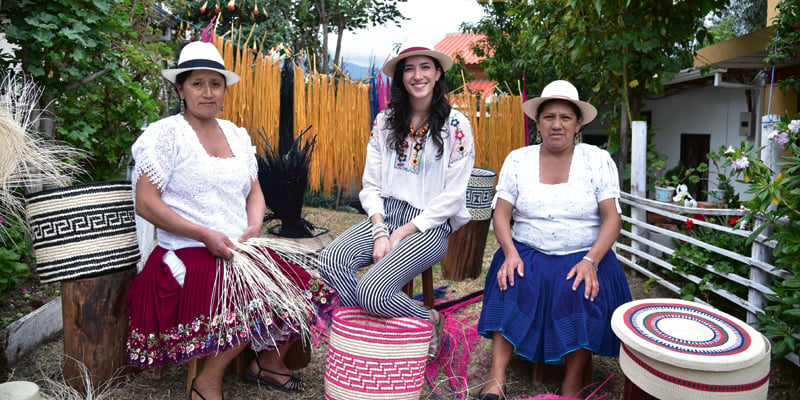Instagram’s favourite milliner opens up on the family traditions behind her brand.
We chat with Yosuzi Sylvester about travel, tradition, and inspiration.
Where did the brand begin?
I decided to train as a milliner when I met the artisans who hand weave the WOMA hat in the Guajira Desert of Venezuela in 2013. I envisioned the potential these hats had, but knew I needed millinery training.
I spent my weekends and evenings taking courses whilst still working in advertising. It was a hobby that took up all my free time for over a year.
Read:
Jennifer Lawrence will front Dior’s first new perfume since 1999
Did you spot this Tunisian designer’s work in Beyonce’s new video?
During this time, I worked on improving the hat, resolving sizing issues and figuring out what colours/shapes my peers liked or didn’t like. I was raised in Venezuela and spent my childhood exposed to my ancestral Guajiro heritage. Through these traditions, I found an appreciation for native stories and artisanal skills.
The WOMA was a traditional hat worn by Guajiros in Venezuela, but unexposed to the rest of the world. Originally its brim was much larger in size to protect the tribesman from the hot desert sun. In 2014 I found a photograph of my grandmother, sporting the original WOMA hat. She had just won the first Miss Venezuela pageant, held in 1956, and was cruising around La Guajira Desert with Spanish reporters.

In 2014, I visited La Guajira Desert with my mum to seek the artisans who made the WOMA hats. We met with the community leaders of the tribe, and received permission to begin working with the artisans from the community.
My mother still speaks the dialect and my great grandfather, Cacique Yajaira, was a well-known chief in the area, which helped bridge connections with the tribe.
What inspired your new collection?
For S/S18, we have introduced a broader collection of hats and bags crafted by artisans in Venezuela and Ecuador. The hats and bags feature beaded adornments hand-woven by Putumayo Indians in Colombia. The trimming designs pay homage to how Putumayo Indians view the world, depicting traditional symbols such as sacred mountains, animals and totems.

What would you like people to think of, when they think of the brand Yosuzi?
That we preserve ancient hand crafts by giving back to the local artisan communities.
Why did you decide to set up the artisan training program?
Through our design-led interventions, we offer an opportunity to revive the WOMA hat craft, which was undervalued in Venezuela and Colombia and is slowly disappearing. Through this solution we created social change amongst the artisanal community.
Our artisans have a full-time job with a bonus structure to strive towards! They are able to afford things they were never able to afford – food, motorcycles, furniture for their homes and school supplies for their kids. They feel a sense of empowerment because their work is valued and appreciated, which is really amazing to witness. We recently taught our artisans who make hats, how to make a bag.
What’s your biggest accomplishment?
Through the proceeds from our sales, we have also managed to fund a non-profit organisation called Cepin dedicated to the health, clothing and feeding of Guajiro children in need. Over the years the Guajiros have migrated to cities in search for better work. They make less than minimum wage working in jobs as maids or construction. As the parents leave all day for work it’s hard for them to supervise their children or provide them with healthy meals throughout the day.

Cepin allows for these children to be healthy and have a chance at a brighter future. We recently inaugurated a library at the school too. Along with the library, we have launched weekly reading programs where parents come in for one hour a week to read to their children.
We hope this program will boost learning potential and make books an integral part of the families’ lives.
Where are the most interesting places you’ve visited?
Guatemala, Vietnam and Peru.
Where do you find inspiration?
Travelling and discovering new places. When I’m not travelling, my inspiration comes from paying attention to detail and listening; ideas can stem from many places. Finding out what is important and what matters to someone can be very valuable and inspiring.
Do you have any travel rituals?
If I am travelling somewhere I’ve never been to, I always book a local travel guide. It’s important to understand and learn the history of the places you are visiting.
Where do you travel when you want to be off the map?
I love doing adventure trips! Recently I did a trip to Vietnam, Laos and Cambodia. I love places with rich history.
What will you be packing this summer?
Kaftans by Pondicherie and Thalita, bathing suits by Andrea Degas, jewellery by Monica Sordo, sunscreen, my hats, bags and shoes will be by Zyne.
Where are you travelling this summer?
In Europe, Mykonos and Antiparos (Greece) and Panteleria (Italy). I’m also doing an adventure in Mexico, visiting Careyes San Miguel de Allende and spending a few days working with craftsmen from the Huichol tribe (known for their amazing hats).
Top three bucket list places?
Ethiopia, Madagascar and Mozambique.
Any hidden secrets that should be on everyone’s travel list?
Restaurants: El Mercado in Lima for the best ceviche.
Beaches: Parque Tayrona, Colombia.
Shopping: Ill pelicano shop in Porto Ercole, Italy.
Any interesting travel reads?
In Patagonia by Bruce Chatwin and Turn Right at Machu Picchu: Rediscovering the Lost City One Step at a Time by Mark Adams.
Do you have a life quote that you live by?
“Remember that happiness is a way of travel – not a destination.” – Roy M. Goodman.
Images: Supplied












